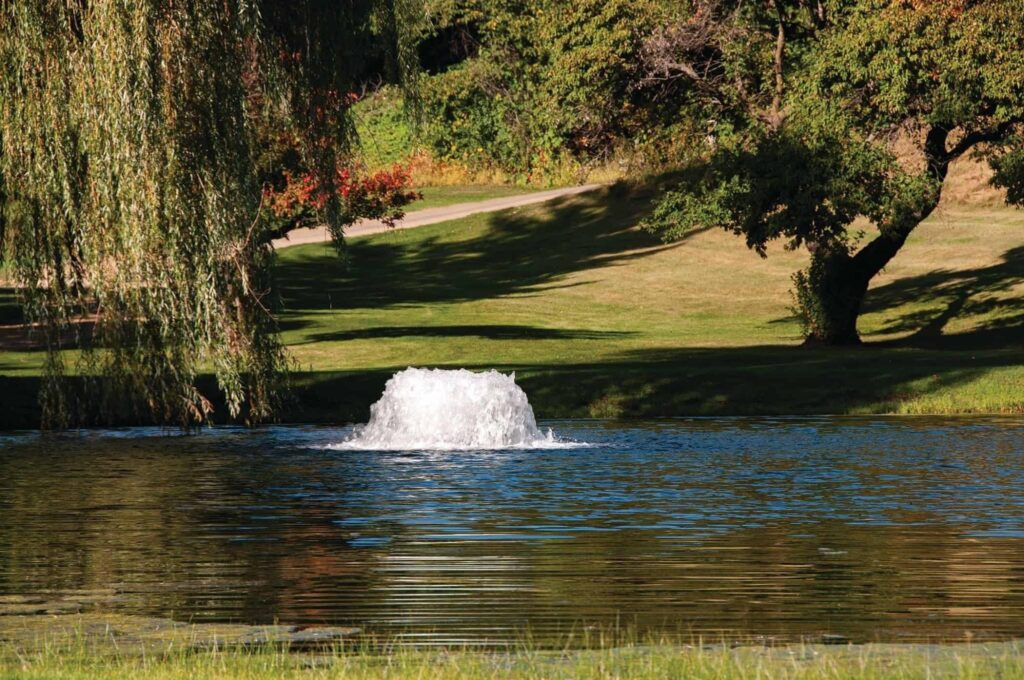A pond aeration pump plays a crucial role in maintaining the health of the water by circulating oxygen. These pumps come in various types, including surface aerators, submersible pumps, and diffuser systems. They operate by agitating the water surface or releasing air bubbles, enhancing oxygen levels vital for aquatic life and reducing nutrient buildup. Aeration pumps also prevent ice formation in colder climates, ensuring year-round pond health.
Aeration is crucial for maintaining a healthy ecosystem in your pond. It involves the process of increasing oxygen levels in the water, which supports fish, plants, and beneficial bacteria. One of the key components of aeration is the pump, as it drives the movement of water and ensures adequate oxygenation. Choosing the right aeration pump for your pond involves several factors that can impact its effectiveness and efficiency. In this guide, we’ll delve into these considerations to help you make an informed decision.
Understanding Pond Aeration
Before you search for pumps for pond aeration, let’s understand why pond aeration is necessary. Ponds, especially those with fish and plants, require oxygen for various biological processes. Without sufficient oxygen, fish can suffocate, algae growth can become uncontrollable, and overall water quality can deteriorate. Aeration helps by:
- Increasing Oxygen Levels: A pump circulates water and exposes it to the air, allowing it to absorb oxygen.
- Promoting Gas Exchange: Aeration facilitates the release of harmful gasses like carbon dioxide and hydrogen sulfide from the water.
- Enhancing Water Movement: Moving water helps prevent stagnation and stratification, which can lead to nutrient buildup and poor water quality.

Factors to Consider When Choosing an Aeration Pump
Pond Size and Depth
The size and depth of your pond are critical factors in determining the type and size of the aeration pump you need. Larger ponds or those with greater depths require more powerful pumps to effectively circulate water and distribute oxygen throughout the entire water column. Measure the surface area and depth of your pond accurately before selecting a pump.
Oxygen Demand
Consider your pond’s oxygen demand, which is influenced by factors such as the number of fish, the presence of aquatic plants, and temperature variations. Fish and plants consume oxygen, and warmer water holds less oxygen than cooler water. Calculate the oxygen demand to estimate your pond’s aeration requirements accurately.
Type of Aeration Pump
There are several types of aeration pumps available, each suited to different pond sizes and configurations:
- Submersible Pumps: Placed underwater, these pumps are suitable for smaller ponds and can aerate water at varying depths.
- Surface Aerators: These float on the water surface and are ideal for shallow ponds or areas with limited depth.
- Bottom Diffused Aerators: These pumps release air at the pond’s bottom, creating bubbles that rise to the surface and distribute oxygen throughout the water column. They are effective for deeper ponds and large water bodies.
Choose a pump type based on your pond’s specific characteristics and aeration needs.
Energy Efficiency
Look for energy-efficient pumps to minimize operating costs and environmental impact. Pumps with lower wattage ratings but high oxygen transfer rates are preferable, as they consume less electricity while effectively aerating the pond.
Durability and Maintenance
Select a pump made from durable materials that can withstand outdoor conditions and frequent use. Consider the ease of maintenance, including access to components that may require cleaning or replacement over time.
Noise Levels
Some pumps can be noisy, which may be a concern depending on the location of your pond and your preferences. If quiet operation is important to you, choose a pump with noise-reduction features.
Budget Considerations
While budget shouldn’t be the sole determining factor, it’s essential to find a pump that offers good value for money. Consider long-term savings from energy-efficient models versus upfront costs.

Steps to Choose the Right Aeration Pump
- Assess Your Pond: Measure dimensions, calculate oxygen demand, and identify any specific challenges (e.g., deep areas, high fish load).
- Research Pump Types: Understand the pros and cons of submersible, surface aerators, and bottom-diffused aerators based on your pond’s characteristics.
- Consult with Experts: Seek advice from pond professionals or suppliers who can provide recommendations tailored to your specific pond size and needs.
- Compare Specifications: Compare oxygen transfer rates, energy efficiency ratings, and warranties among different pump models.
- Consider Long-Term Benefits: Factor in operational costs, maintenance requirements, and durability when making your final decision.
Conclusion
Choosing the right aeration pump for your pond is essential for maintaining water quality and supporting aquatic life. By considering factors such as pond size, oxygen demand, pump type, energy efficiency, durability, and budget, you can make an informed decision that ensures effective aeration and long-term benefits for your pond ecosystem. Remember to regularly monitor your pond’s oxygen levels and adjust aeration as needed to promote a healthy and thriving aquatic environment.
Investing in a quality aeration pump enhances the beauty of your pond and contributes to its ecological balance. It provides a habitat that supports fish, plants, and beneficial microorganisms. With this guide, you’re equipped to choose a pump that meets your pond’s specific aeration requirements and contributes to its overall health and vitality.








